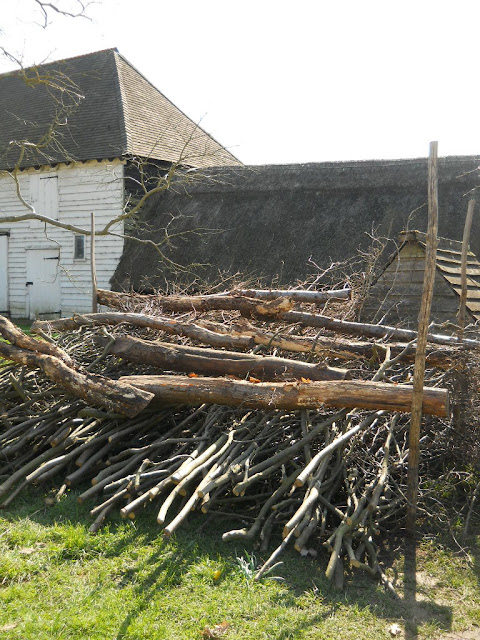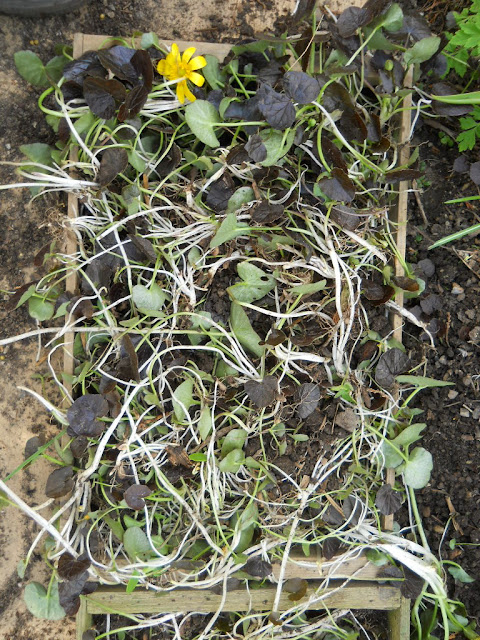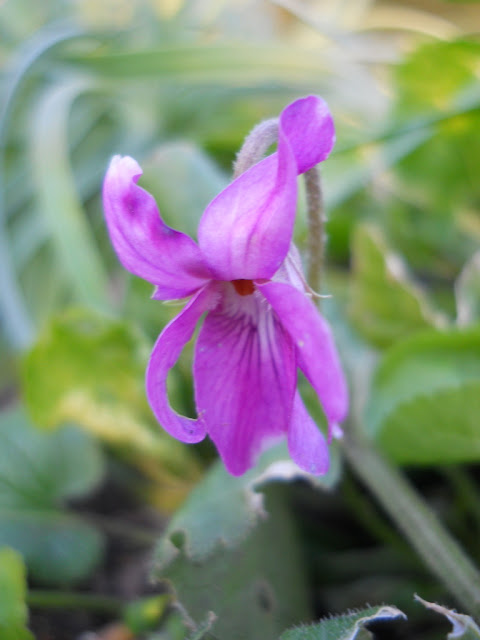
I apologize for not posting much this week, but we all have been very busy working to get the garden ready for opening day, tomorrow, April 1st. Since all the students volunteered last weekend, today is the first day off in 12 days! It has been an amazing week, long, hot, sun burned days, full of planting, weeding, sweeping, pruning. However, it has not been all work and no play. On Wednesday after lunch Fergus took the students and some staff around the garden to evaluate the spring bulbs. Everyone had their notebooks out and we all scribbled names and notes about the various things we were seeing. The pot displays are packed full of new bulbs; not only do they look beautiful arranged all together, but it is a great way to study and evaluate them for their potential garden worthiness. Things to consider: length of flowering (evidenced by buds and old flowers at the same time), how high the flowers sat above the foliage, the foliage (leaves too fat, too long, too floppy), consistency of the plant (color variation, shape or size variation), proportion of plant, color (flowers, buds, foliage), and then of course, the overall affect. Fergus really wanted to know what we all thought- which plants we thought were the best and if we liked something he didn't, he wanted to know why. It was so inquisitive and since then I have looked at every plant with a more critical eye. That is how we should be looking at everything we do.
The above Narcissus 'Spellbinder' was one Fergus said looked like it had been to the gym, it was proud and bold. Anecdotal comments like this make a plant stick in your mind. This large flowering, "good" plant could make a great display in a border garden. Fergus was always standing back and talking about what sort of impact a bulb would make out in the garden.
Narcissus 'Jenny' remains one of my favorites at the end of the day. It is small flowered, well proportioned, and has a dynamic shape with its long, slender trumpet and reflexed petals. I like its subtle color variation, with a pale yellow trumpet and a spring green on the backside of its petals.
'Jenny'
Another favorite, Narcissus 'Cragford,' is tall and stately, with a rich orange center and multiple blooms on each stem; this one is capable of making a statement from far away.
Muscari 'Valerie Finnis'
This plant set Fergus off on a story about Valerie Finnis, the great plantswoman, gardener and photographer- apparently she was a bit of a prankster! Anna Pavrod wrote her obituary and you can read it
here. The last quote in the article is rather poignant and lines up well with recent conversations I have had with students. Here everyone loves their work so very much that it is hard to strike a balance between work and the people you love. "For years plants used to be more important than people to me. But really it's only people that matter." -
Valerie Finnis
Muscari 'Blue Magic'
This one is a more vibrant color than the photo shows, it has a squirrely habit, a long bloom time, and slender leaves. Fergus says this one is his favorite..
Narcicssus 'Jet Fire'
A really good, all around favorite. Well proportioned, good shape and color, and it makes a strong impact. This one blooms early and lasts for quite a while.
These last few photographs are bulbs planted out in the beds. This Fritillaria verticillata stands tall and spindly in the walled garden. It has tendrils like sweet peas and it flowers hang like bells all along its stems.
Tulipa praestans 'Fusilier' is one of the best!
Tulips saxatilis seen flowering on the ledge. Stay tuned for more bulbs!






















































